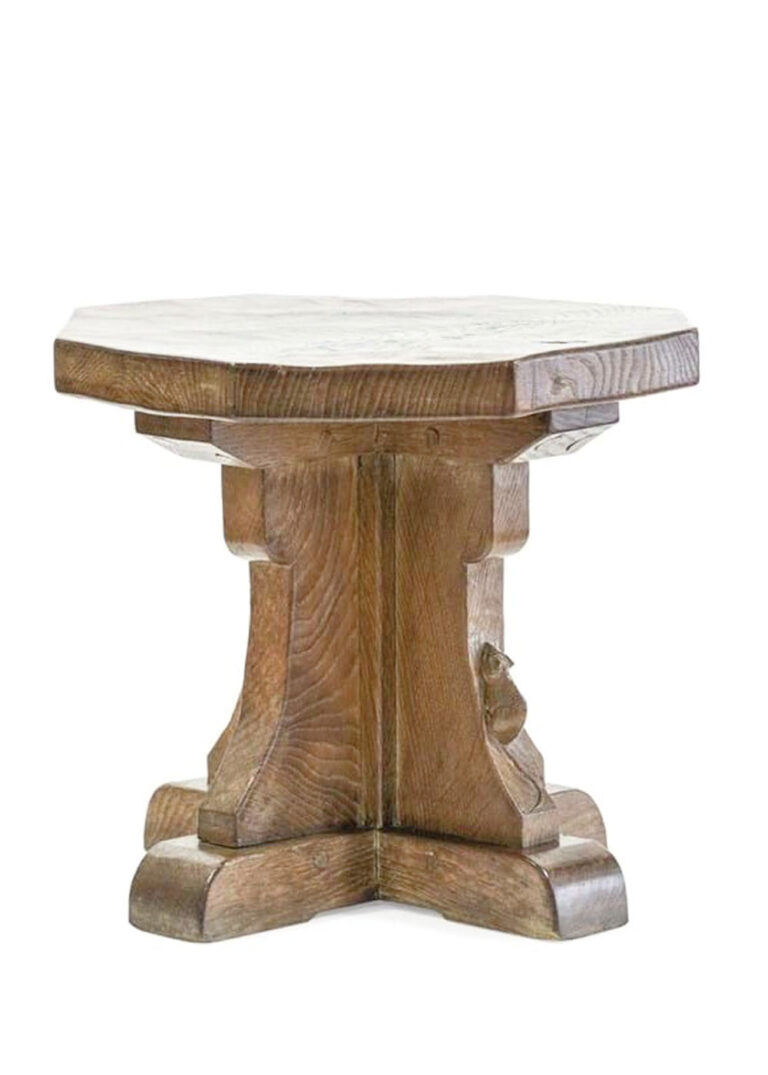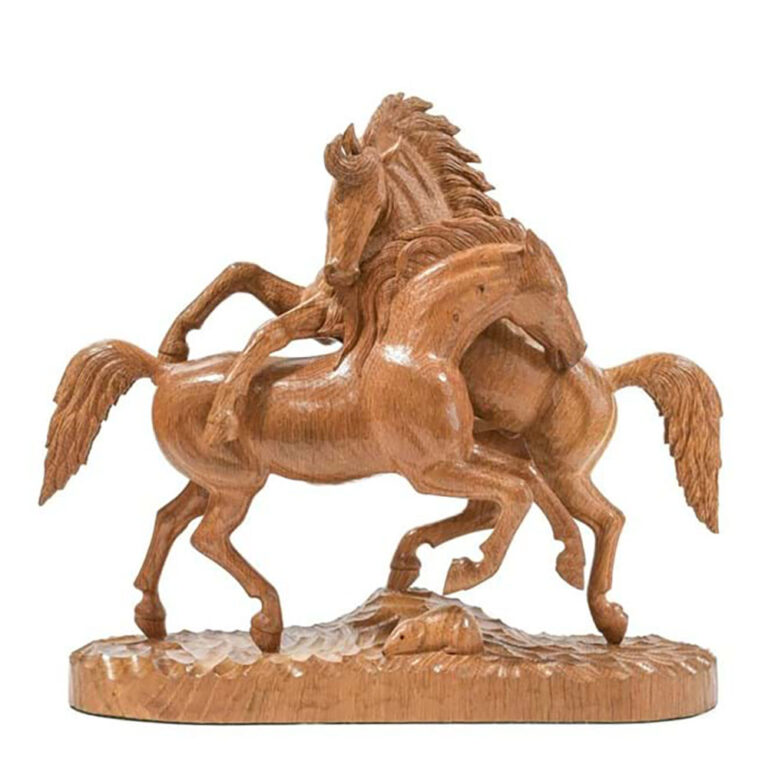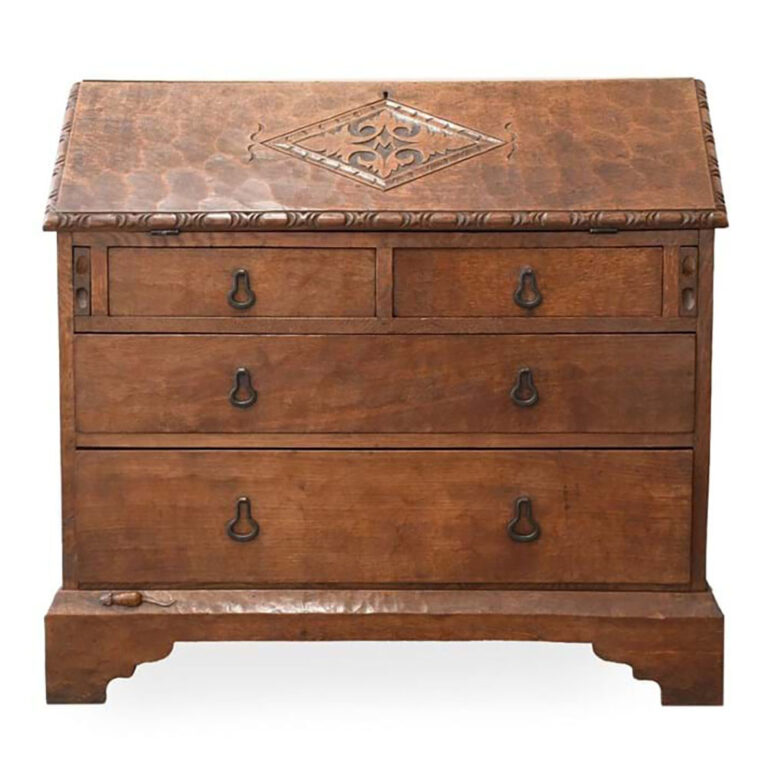It’s not his real name – he was born Robert Thompson in North Yorkshire in 1876 – and being named after a rodent actually came about almost by accident. “I and another carver were carving a huge cornice for a screen, and the other carver happened to say something about being as poor as a church mouse,” said Thompson. “I said, ‘I will carve a mouse here,’ and did so, and then it struck me – what a lovely trademark.”
The son of a jobbing carpenter and stonemason, Robert became responsible for the family’s rural business after his father died in 1895. Influenced by medieval woodcarver William Bromflet, Thompson turned his back on the modern tools of the industrial revolution and instead taught himself the art of the mortise and tenon joint dowelled for strength, using the adze as a tool for shaping and smoothing surfaces in the tradition of the Arts & Crafts movement, and creating a distinctive rippled effect to the surface in the process.
He received his first major commission from Ampleforth Boy’s College in 1919 and although he carved that first mouse in the early 1920s, it wasn’t registered as a trademark until the 1930s. In 1928 Thompson accepted his first commission from the United States and expanded his workforce to 10 craftsmen, and by 1934 the family business employed 30 workers.
The earliest mice to be carved by Mouseman – dating from the 1920s to the early 1930s – featured carved front paws, but because they were prone to breaking Thompson began carving mice without paws in the 1930s. The figure was carved on all types of furniture, from tables and chairs to boxes and sideboards, and can sometimes be difficult to find; on other items, such as cheeseboards, he is quite clearly in the open, scampering around the side of the board on the earlier examples and then later being carved into the handle.
Made entirely by hand, each piece from the Robert Thompson workshop was the responsibility of a single craftsman, from the original selection of the piece of English oak (no other timber was used) to carving of mouse and the final coat of wax. The golden finish seen on the earlier pieces of Mouseman furniture has developed over many years following the initial fuming process – a technique used in the early 1900s in which the tannic acid in the seasoned oak reacts with ammonia to produced a greyish colour that ultimately develops into a rich golden brown.
Thompson’s phenomenal success as a craftsman led to the establishment of other hand made furniture studios in the North Riding area of Yorkshire, with workshops springing up in surrounding villages as other carvers chose different small creatures as their signature. None bring the prices of an original Mouseman, however; the record for a piece of furniture is held by Sotheby’s New York, who sold a c.1932 two-section cupboard with elaborate ironwork – and a carved mouse – for US$70,000.
Although Mouseman furniture is still being made today at the family firm of Robert Thompson’s Craftsmen Ltd using the same traditional techniques, the most sought after pieces date from pre-1955. Even if they weren’t created by the Mouseman himself, they were made under his tutelage and this fact alone usually sees a vintage Mouseman item sell for at least twice the price of modern-day examples, which tend to lack the intricate detail of the earlier mice.



